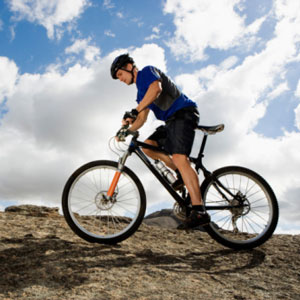 Repeated stresses can lower the efficiency of the musculoskeletal system, alter proper movement in the joints or reduce the elasticity of muscles and tendons, producing strain of ligaments and irritation of nerves. It is possible that you may have ignored the signs of tiredness or even pain carrying on with your sport for too long without treatment, now to find yourself with a chronic injury.
Repeated stresses can lower the efficiency of the musculoskeletal system, alter proper movement in the joints or reduce the elasticity of muscles and tendons, producing strain of ligaments and irritation of nerves. It is possible that you may have ignored the signs of tiredness or even pain carrying on with your sport for too long without treatment, now to find yourself with a chronic injury.
Injury is not the only problem for professionals or amateur athletes. Many find that they reach a limit in their performance, not being able to improve further, however hard training they put in. This is why so many top athletes consult chiropractors to help them improve the functional efficiency of their body. Whether it is a previously undetected spinal mechanical problem, or years of poor body mechanics, the resulting injury could potentially signal the end of a sporting career.
Whether you are an amateur sports enthusiast or a professional athlete, your body is prone to the same kind of injuries. It is common for Chiropractors to see athletes with:
- Hamstring and calf strains
- Achilles tendon injuries
- Groin and thigh sprains
- Neck and lower back pain
- Shoulder injuries
- Tennis elbow
- Tendonitis
Chiropractic care aims at correcting the underlying cause of the problem, rather than just the symptoms. The Chiropractor will perform a full evaluation of the functional state of the body, they will ask you questions regarding the details of your daily and sporting activities, your posture, lifestyle and habits. Chiropractic treatment aims at restoring normal function to joints, muscles and nerves, but may also increase body control, co-ordination and muscle strength.
Treatment may involve:
- Exercise therapy to strengthen and lengthen the hamstring muscles.
- Neuromuscular injury prevention strategies, including proprioceptive balance training.
- Chiropractic manipulative therapy (adjustments) and correction of lumbar-pelvic biomechanics.
- Muscle activation work to improve hip extension, motor patterns and running technique.
- Massage and mobilisation to increase flexibility and range of movement directed towards soft-tissue structures, articular structures and neural tissue.
- Education for awareness and avoidance of supposed risk – e.g. if an athlete has a running/training session and a weights session on the same day, do the running session first when less fatigued because that has greater risk of hamstring injury than weightlifting.
- Functional training and sport specific drills.
